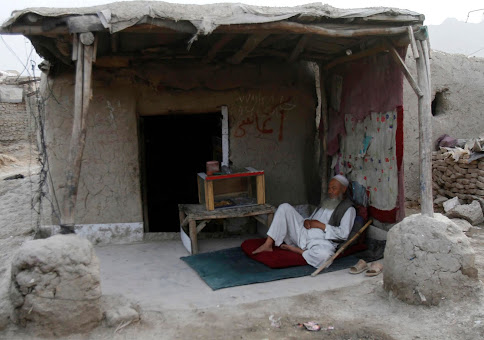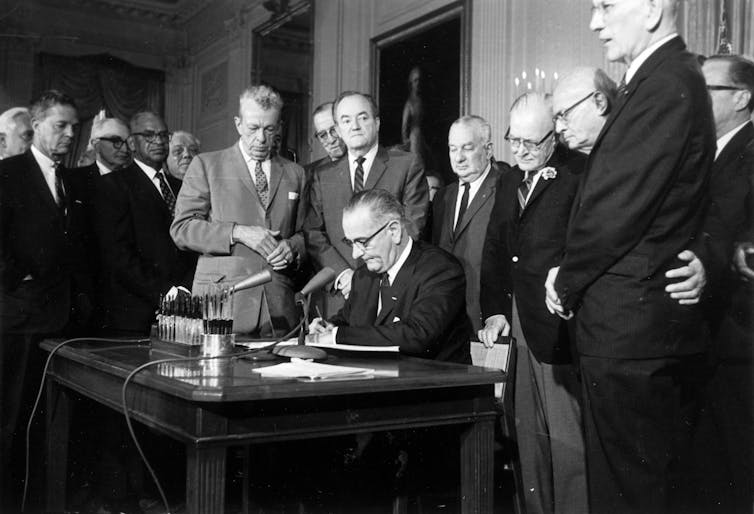The history I was aware of indicated that there were two independent factors the US could never have succeeded in Afghanistan. Both were fatal on their own. One was the intractable corruption and associated incompetence of the Afghan government the US installed there. Many of the Afghan people came to hate it. The corruption and incompetence made a mockery of their lives and dignity. Sarah Chayes made clear the depth and breadth of corruption in Afghan government and society in her 2015 book, Thieves of State: Why Corruption Threatens Global Security.
The other fatal factor was the fact that Pakistan provided a refuge for the Taliban, making it impossible to destroy it militarily. The Taliban was impossible to defeat by military force as long as Pakistan provided a sanctuary and the US refused to wage war there.
A third independent reason has been argued by foreign policy expert Johan Blank. A few weeks ago, Blank wrote this in The Atlantic:
The original sin of the war in Iraq was going to war in Iraq. And the original sin of the war in Afghanistan was going to war in Iraq.
In September 2001, when Joe Biden was the chair of the Senate Foreign Relations Committee, I was the policy adviser for the stretch of Asia that included Afghanistan. By 9 a.m. on 9/11, I felt certain that al-Qaeda (which was based in Afghanistan) was behind the attacks—but that we’d end up invading Iraq anyway.To understand [Biden’s] decision to get out [of Afghanistan], one has to understand the decision to get in—and how that choice was quickly undermined by the invasion of another country.In 2001, even the most ardent war hawks didn’t want to invade Afghanistan: They wanted to invade Iraq. Neoconservatives, such as the Pentagon officials Paul Wolfowitz and Doug Feith, had a grand vision of remaking the country in America’s image. Paleoconservatives, such as Vice President Dick Cheney and Secretary of Defense Donald Rumsfeld, wanted to oust Saddam Hussein, install a pliable puppet, and thereby deter any other would-be adversaries. Both camps saw Afghanistan as an unwelcome distraction from the main event, but they applied the same rationales there.Biden belonged to neither camp. He rejected both the unrealistic ambitions of the neocons and the unambitious realism of the paleos.Biden never bought into the notion of full-on nation building, though. As he said on the Senate floor, right after his first trip to Afghanistan, “We’re not talking about turning Kandahar into Paris.” He did believe that if the U.S. was going to invade a country, it had the moral and political obligation to do right by its inhabitants. He was the first American political leader to propose a billion-dollar pledge of reconstruction aid.The approach advocated by Biden was forward-leaning but not unrealistically ambitious: Enough troops to crush al-Qaeda and prevent the Taliban from moving back into power before a successor could be established; enough development aid to help a ravaged people get back on their feet after far too much suffering; and all of this as part of a genuinely multinational effort. Could such an approach have worked?Yes—and it did. For about two years after the ousting of the Taliban, that’s the path the nation was on.What changed after 2002? In a word, Iraq. The Bush administration’s focus started shifting within weeks of the Taliban’s ouster, and plans for the Iraq invasion soon became all-consuming. Too light a troop presence in Afghanistan meant that security was never truly established; too little money actually delivered meant that the fledgling government was never able to prove its credibility to its own people; too little focus from U.S. policy makers meant that a highly centralized governing structure, imposed on a never-before-centralized nation, could not be prevented from degenerating into nepotism, ineffectiveness, and rampant corruption. Failure to provide enough troops, money, and focus on the front end resulted in exponentially more troops, money, and focus down the line.By the time U.S. troops crossed into Iraq in 2003, Afghanistan was already an afterthought for the administration. The Taliban regrouped across the border in Pakistan and was soon back on the offensive. Osama bin Laden and the rest of al-Qaeda’s leadership, after escaping the U.S. dragnet at Tora Bora, was comfortably ensconced nearby. Without effective support from the U.S. during this key period (the first few years were when the commitment was make-or-break), the fragile experiment in Afghanistan had little chance to succeed.So many things went wrong in the subsequent years, and there was plenty of blame to go around. I saw Biden’s frustration grow: frustration with the Bush administration, with Afghanistan’s then-President Hamid Karzai, with all of the supposedly smart experts (and clearly not-too-smart staffers) who couldn’t figure out how to make the project work.Biden reached the end of his rope on the last trip I took with him while he was chairman, in January 2009. .... He was ahead of the curve: A dozen years further on, much of official Washington still isn’t ready to leave Afghanistan.The Afghans will have to forge their future under far more difficult circumstances now than they would have if their fledgling civil society had been given, say, a decade to really take root. That breathing space could have been provided by U.S. resources that were instead pulled away for the war in Iraq.There is a real chance that Afghanistan will return to the bloody anarchy of the 1990s. But there’s also a real chance that it won’t.
Blank goes on to express optimism that the Afghan people will resist the Taliban and go on to build a society that is different from what the Taliban wants to impose by force. He argues that what will be needed is continuing US support for the government now in place, regardless of its corruption and incompetence.
One can only hope that Blank is speaking for what most of the Afghan people want and that it really is possible given how deeply flawed the government is. To get a feel for just how corrupt the government is, the Chayes book Thieves of State is a good place to start.






